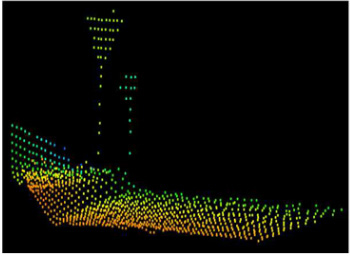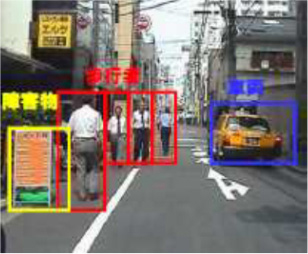Smart mobility system using AI technology from the University of Tokyo
About the autonomous driving system
Automatic running car does not equal to practical use.
Based on the technology from Advanced Mobility Research Center (ITS Center), Institute of Industrial Science, The University of Tokyo, we repeat strict developments and experiments for the safety issue even if we have already cleared several criteria.
The autonomous driving system we aim is suitable for any road condition, which can deal with any accident automatically.
The combination of a number of techniques is utilized to realize a safe autonomous driving system.
The background and problems of autonomous driving in general transportation environment
The recognition (sensing) system is the most important part for an autonomous vehicle.
However, it is almost impossible that we rely on only the controlling system for the coexistence with non-autonomous driving vehicles. Although we could set sensors for understanding to the surrounding, we cannot handle a complete view due to the shadowing.
Therefore, we not only develop the sensing system, but also try to connect to the road infrastructure and propose a more effective solution.
Examples of problems to be solved
The actions of rear side safety verification
- ●Lane change
- ●Obstacle avoidance
- ●Lane change using oncoming lane
- ●Right turn on the intersection without dedicated signals
The recognition of side area and rear area
Number of sensors and the resolution power of sensors.
Detection of vehicles with fast relative velocity.
Sensing distance
The intersections without traffic signals.
The recognition of left and right area
Number of sensors and sensing range
Dealing with the color of signals.
Traffic signal recognition
Robust against environment (Sun shine, fog)
The connection with traffic signals
Signal recognition outside of the sensor range
- The current signal and remaining time can be received from a cloud server.
※Currently, 4G is utilized and 5G is also possible to be used in the future - We control the vehicle based on the received signal information
- ↓↓
- The signal pattern could be predicted and the sudden break can be avoid
- Smooth pass of the intersection can mitigate accidents, traffics and save energy
- This method would not be affected by shadowing objects or shape of the roads.

Basic running functions
Steering controlling and velocity controlling along the route
- Lane keep based on the route axis table and high precision positioning system
- ※Magnetic marker (road side), magnetic sensor (vehicle side) ensure the long term position handling
- Smooth speed up and down based on the speed limit and front vehicle following (ACC)
- Smooth stop / start at certain area (decided by the driver by bottom press)
- The connection with traffic signal at intersections
- Precision docking at bus stops using RTK-GPS

Recognition systems
Using multiple sensing techniques to realize obstacle or front vehicle recognition
- Sensing techniques such as deep learning using camera (AI), LiDAR, millimeter wave radar etc., increase the stability of the recognition performance.
- The concept of digital map is used to judge if the vehicle is inside lane or not.
Object detection using LiDAR.


Deep Recognition using deep learning.


Lane information is used to judge
if the vehicle is inside lane or not.

Platoon system (truck)
Platoon truck system is that there is/are one or multiple unmanned trucks following a manual driving truck through an electronic connection. The platoon trucks run on highway while keeping a short inter-vehicular distance.
The electronic connection means connecting trucks using wireless communication instead of physical connections.
The platoon truck system can keep extremely short inter-vehicular distance which cannot be realized by manual driving. This kind of system not only mitigates the increase of traffic, but also is expected to reduce the air resistance of the follow-on vehicle and the release of carbon dioxide.


We do experiments on highways in order to bring the system to practice
Unmanned driving system (bus)
We combine multiple controlling techniques to realize complete autonomous driving
For example, in order to handle the position of the vehicle, the combination of high precision position using GPS and local position system by magnetic marker set inside the ground provides a long-term positioning service, which enables a high level lane keep ability even when GPS signal level is unstable.
By the combination of state-of-the-art techniques and the conventional ones, we reach a higher level of control and recognition system.

We do inbound experiments in order to bring the system to practice
